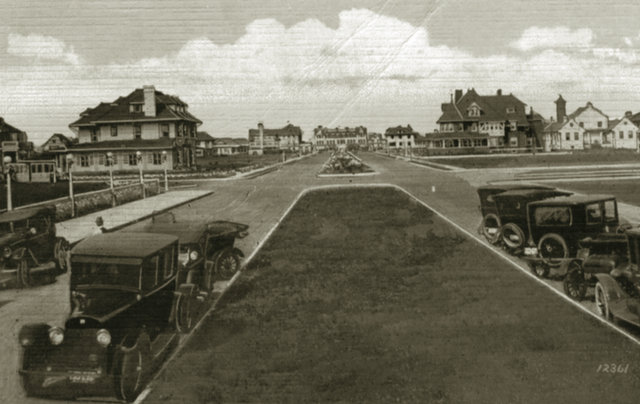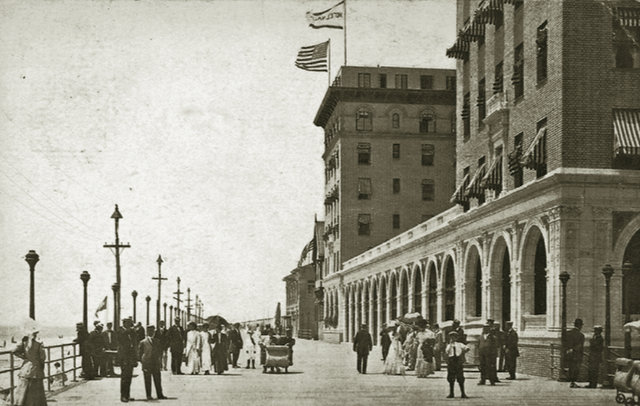3. Long Beach
 Planted medians, red tile roofs, and red brick streets set the tone in Long Beach. Society for the Preservation of Long Island Antiquities.
Planted medians, red tile roofs, and red brick streets set the tone in Long Beach. Society for the Preservation of Long Island Antiquities.
Long Beach, in what became one of Long Island’s two incorporated cities, was the idea of Senator William H. Reynolds, a developer with a strong track record who constructed thousands of houses and apartment buildings and Brooklyn and Queens. In 1906, Reynolds, like so many other developers of the era, encountered a “a blank tract of land” with “so many hundred feet waterfront” that offered “carte blanche”. It is here that Long Beach rose, and created what many called a “new city by the sea” within the ideal suburban environment Long Island offered.
The concept was to build Long Beach as the region’s answer to Atlantic City, targeted exclusively for what he deemed to be the “wealthy classes.”Long Beach was to be even better than Atlantic City, for it was located even closer to New York City. By 1907, the Brooklyn Eagle already deemed Reynold’s project a success, with the “Estates of Long Beach” opening to a crowd of at least one thousand people. The crowds, like many of the planned communities of the era, were made possible thanks to the prospect of sizable investment by the LIRR, who had plans for one of their “finest depots” that ensured the all-important 30 to 40 minute ride to Manhattan.
 Hotel Nassau on the boardwalk. Society for the Preservation of Long Island Antiquities
Hotel Nassau on the boardwalk. Society for the Preservation of Long Island Antiquities
As time wore on, Long Beach built more hotels, casinos and invested heavily in their bathing facilities, which could at the time accommodate up to 5,000 bathers. The Eagle heaped praise upon Reynold’s accomplishment, with the publication speculating that the City by the Sea’s popularity will span the globe. By design, Long Beach was to capture the essence of the best seaside resorts, as well as emulating Reynold’s residential developments in Laurelton, Queens.
Today, Long Beach retains much of the charm and character since its founding – with its future up still being shaped by ambitious prospective development, as well as the challenges mother nature throws at its waterfront, the City’s main spirit is derived from its residents, many of whom are lifelong inhabitants of Reynold’s City by the Sea.





